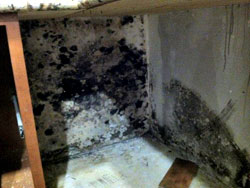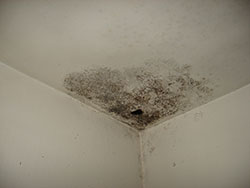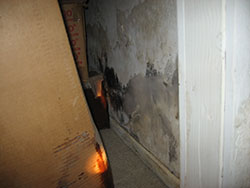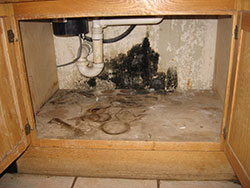Mold Facts*
Molds are simple, microscopic organisms, present virtually everywhere, indoors and outdoors. Molds, along with mushrooms and yeasts, are fungi and are needed to break down dead plant and animal material and to recycle nutrients in the environment. Molds can grow on surfaces or objects in buildings. They may be visible or, if inside walls or building structures, not visible to you.
For molds to grow and reproduce, they need only a food source—any organic matter, such as leaves, wood, or paper—and moisture. Because molds grow by digesting organic material, they gradually destroy whatever they grow on. Mold growth on surfaces can often be seen in the form of discoloration: frequently white, gray, brown, or black but also green and other colors.
Common sources of moisture that may lead to indoor mold problems include:
- Flooding
- Leaky roof
- Sprinkler spray hitting a building
- Plumbing leaks
- Overflow from sinks or sewers
- Damp basement or crawl space
- Steam from showers or cooking
- Humidifiers
- Wet clothes hung to dry indoors
- A clothes dryer that exhausts air indoors
Prevention is important to avoid mold problems. Inspect your home, school, or workplace regularly for the signs and sources of indoor moisture and mold.
Health Effects of Mold
Molds release tiny spores and even smaller particles that travel through the air. Everyone inhales some mold every day without apparent harm; however, molds can cause inflammation, allergy, or infection. Allergic reactions are the most well-recognized responses to inhaling mold spores.
While we know there are health effects associated with indoor dampness and mold, we do not know how much specific molds are responsible, and how much of the effects might be caused by bacteria or chemical emissions. We know that dampness and mold cause health effects both in allergic and non-allergic people. The health effects consistently associated with indoor dampness and molds include:
- Allergic rhinitis (runny nose)
- Upper respiratory symptoms, such as stuffy or congested nose or sinuses, sore throat, or irritated nose or throat
- Lower respiratory symptoms, such as wheezing, difficulty breathing, shortness of breath, or cough
- Asthma attacks in those who already have asthma
- Causation of new asthma
- Respiratory infections such as acute bronchitis
- Eye irritation (burning, watery, or reddened eyes)
- Eczema, and skin rashes or irritation
How Much Mold Can Make Me Sick?
It depends. For some people, a relatively small number of mold spores can trigger an asthma attack or lead to other health problems. For other persons, symptoms may occur only when exposure levels are much higher. Nonetheless, indoor mold growth is unsanitary and undesirable. Basically, if you can see or smell mold, identify and eliminate excess moisture and cleanup and remove the mold.
Are Some Molds More Hazardous Than Others?
Perhaps. Allergic persons vary in their sensitivities to mold, both as to the amount and the types to which they react. In addition to their allergic properties, certain types of molds (such as Stachybotrys chartarum) may produce compounds with toxic properties known as mycotoxins.
A mold may not always produce mycotoxins, depending on the material on which it is growing, the indoor temperature or humidity, the pH of the material, or other, as yet unknown, factors. When produced, mycotoxins may be present in both living and dead spores as well as materials that were contaminated with mold.
A wet layer encloses S. chartarum spores while they are growing, preventing them from readily becoming airborne. However, when the mold dries up, air currents or physical handling can release spores into the air.
At present there is no environmental test to determine whether S. chartarum found in buildings is producing toxins, nor can blood or urine tests establish that an individual has been exposed to S. chartarum spores or toxins.
Are Some Persons at Greater Risk if Exposed to Mold?
Exposure to building-related mold is not healthy for anyone. Therefore, it is best to identify and correct high moisture conditions quickly, before mold grows and health problems develop.
Some persons may have more severe symptoms or become ill more readily than others:
- Individuals with existing respiratory conditions, such as allergies, chemical sensitivities, or asthma
- Persons with weakened immune systems (such as HIV infected persons, cancer chemotherapy patients, and so forth)
- Infants and young children
- Older persons
Anyone with a health problem they believe to be due to mold should consult a medical professional.
*Source: California Department of Public Health - Indoor Air Quality Section/Indoor Mold
HOME | WHY EMS | MOLD FACTS | LEAD PAINT REMOVAL | RESOURCES | CONTACT US










